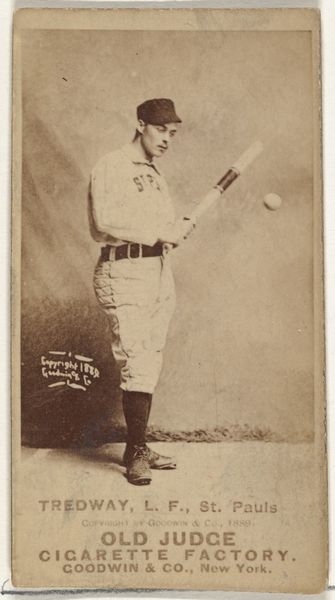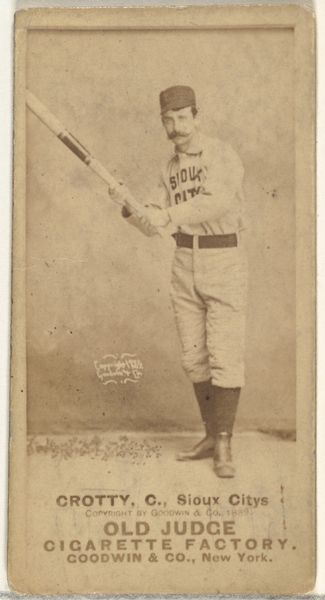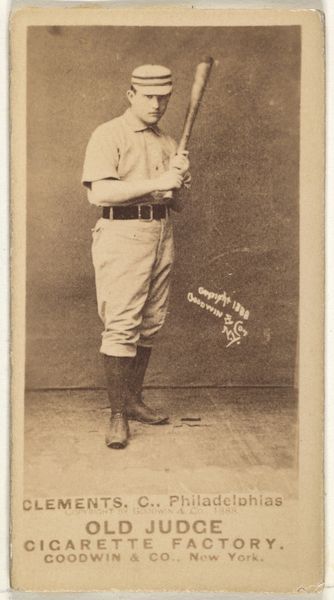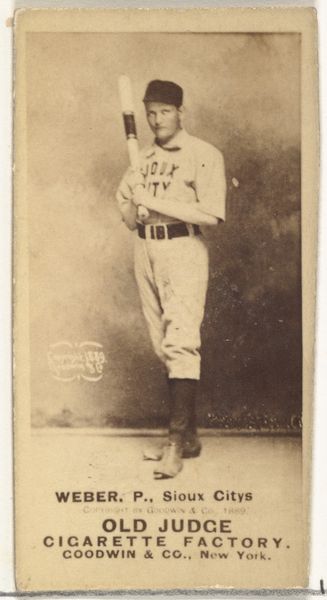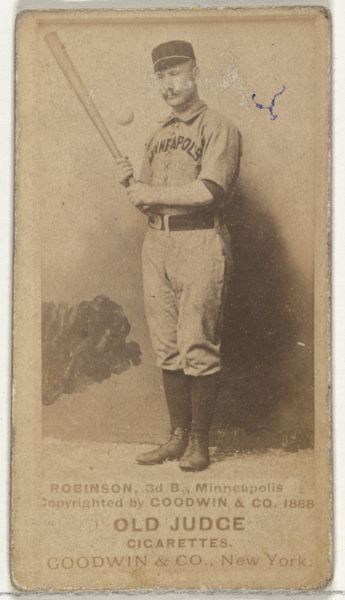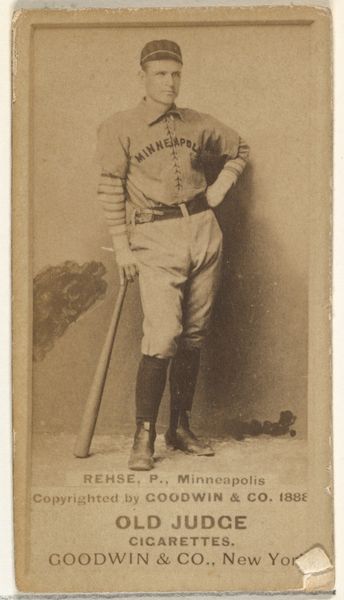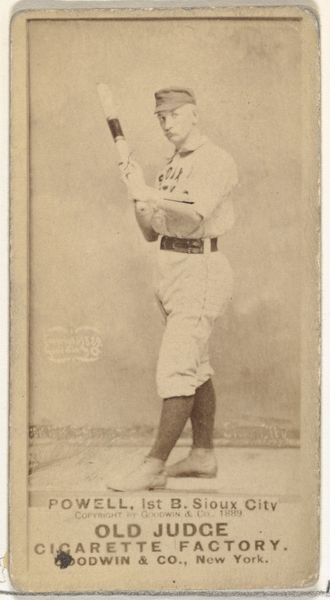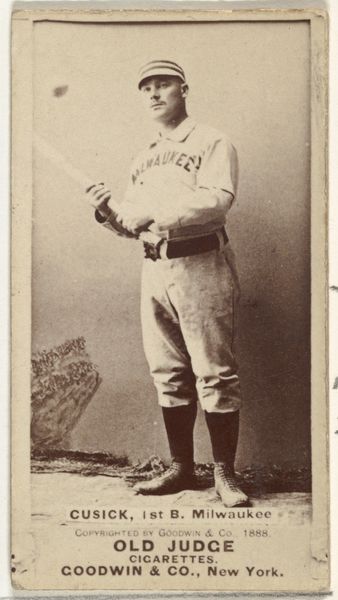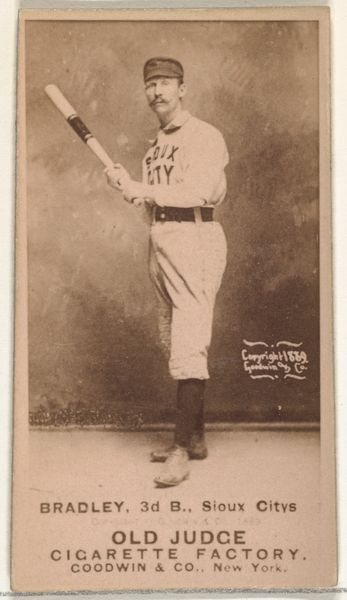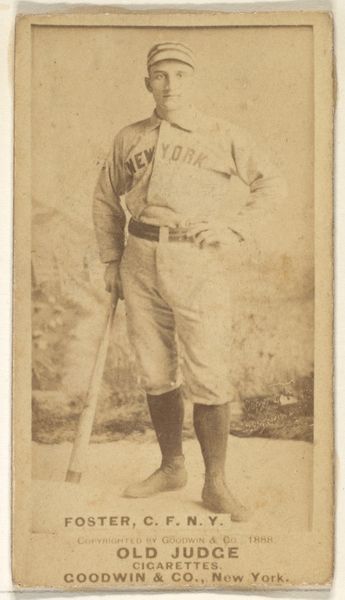
George B. Treadway, Left Field, Denver, from the Old Judge series (N172) for Old Judge Cigarettes 1889
0:00
0:00
drawing, print, photography, collotype
#
portrait
#
drawing
# print
#
baseball
#
photography
#
collotype
#
19th century
#
genre-painting
Dimensions: sheet: 2 11/16 x 1 3/8 in. (6.9 x 3.5 cm)
Copyright: Public Domain
Curator: Before us, we have a curious object, “George B. Treadway, Left Field, Denver, from the Old Judge series (N172) for Old Judge Cigarettes," made in 1889 by Goodwin & Company. It's a collotype print, a sort of hybrid of photography and printmaking. Editor: It’s striking how contained and almost austere it feels. There's something melancholy about the sepia tones and the staged, almost flattened perspective of the figure against the vague background. Curator: Indeed, the limited tonal range really emphasizes the materiality of the collotype. Consider the texture, the slight imperfections in the ink laydown – they point to the printmaking process itself as much as the photographic image. It speaks of industry, production. It’s commercial! Editor: Precisely! One has to consider who was buying and producing these objects. They were literally distributed with Old Judge Cigarettes, inserting images of labor and sports heroes directly into the everyday habits and hands of consumers. And the studio practice, the making of a heroic image out of an athletic endeavor... Curator: Yes, we have a cultural document as well. Note how Treadway, with his bat, is meticulously posed, almost as if a painterly study of form. It is this tension between realistic portraiture and constructed imagery which forms the essence of the work’s conceptual frame. The interplay between light and shadow, and how that forms shapes is a critical compositional aspect here. Editor: The cigarette cards weren't just circulating idealized images. They were physically part of an economy that commodified bodies, baseball, and tobacco! This commodification facilitated mass culture, and arguably influenced labor relations, as professional athletes grew in popularity. I'm particularly interested in where the materials came from, where and how was it produced, and what distribution networks existed at the time! Curator: Fascinating! It highlights the formal relationships – figure, ground, object. By examining the structures that constitute the piece itself, we decode deeper symbolic meaning. The artist makes a baseball player! The process makes a print! These forms combine for new layers of meaning! Editor: So, what begins as an exploration of technique then quickly morphs into an intriguing consideration of the very means by which turn-of-the-century society fashioned heroes and promoted both baseball and smoking. Curator: It's a compelling fusion of visual artistry and industrial processes! Editor: Indeed! I'm off to smoke and think about art!
Comments
No comments
Be the first to comment and join the conversation on the ultimate creative platform.
